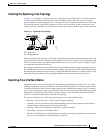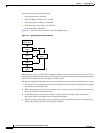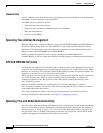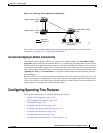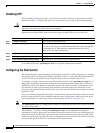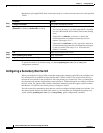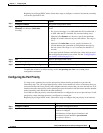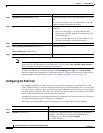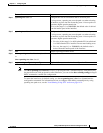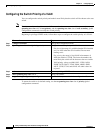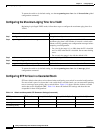
11-13
Catalyst 2950 Desktop Switch Software Configuration Guide
78-14982-01
Chapter 11 Configuring STP
Configuring Spanning-Tree Features
These examples show the effect of the spanning-tree vlan vlan-id root command with and without the
extended system ID support:
• For Catalyst 2950 switches with the extended system ID (Release 12.1(9)EA1 and later), if all
network devices in VLAN 20 have the default priority of 32768, entering the spanning-tree vlan
20 root primary command on the switch sets the switch priority to 24576, which causes this switch
to become the root switch for VLAN 20.
• For Catalyst 2950 switches without the extended system ID (software earlier than
Release 12.1(9)EA1), if all network devices in VLAN 100 have the default priority of 32768,
entering the spanning-tree vlan 100 root primary command on the switch sets the switch priority
for VLAN 100 to 8192, which causes this switch to become the root switch for VLAN 100.
Note If your network consists of switches that both do and do not support the extended system ID, it is unlikely
that the switch with the extended system ID support will become the root switch. The extended system
ID increases the switch priority value every time the VLAN number is greater than the priority of the
connected switches running older software.
Note The root switch for each spanning-tree instance should be a backbone or distribution switch. Do not
configure an access switch as the spanning-tree primary root.
Use the diameter keyword to specify the Layer 2 network diameter (that is, the maximum number of
switch hops between any two end stations in the Layer 2 network). When you specify the network
diameter, the switch automatically sets an optimal hello time, forward-delay time, and maximum-age
time for a network of that diameter, which can significantly reduce the convergence time. You can use
the hello keyword to override the automatically calculated hello time.
Note After configuring the switch as the root switch, we recommend that you avoid manually configuring the
hello time, forward-delay time, and maximum-age time by using the spanning-tree vlan vlan-id
hello-time, spanning-tree vlan vlan-id forward-time, and the spanning-tree vlan vlan-id max-age
global configuration commands.



